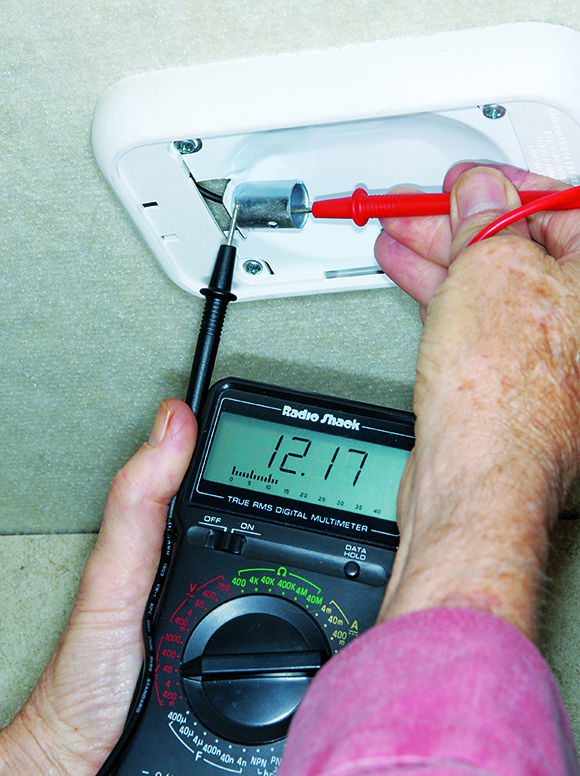How To Test 50 Amp Rv Outlet With Multimeter
A multimeter, also known as a multi-tester, can be one of the most useful tools to conduct in your motorhome. It allows you to measure out a diversity of electrical functions including DC and Air-conditioning voltage, circuit continuity and resistance. If you lot don't take one, check hardware stores for a variety of these meters that accept a digital readout.
Why employ a multimeter
A primary function for a multi-tester may be considered a "gas gauge" for battery state of accuse, and to measure the viability of your charging sources – very important if yous often dry camp. To clinch consistent results while using the meter for charge status of the house batteries, readings should be ever be taken the same way – with no load (except refrigerator) or charging input.
How to use a multimeter
To test charging via the engine alternator, first the engine and use the meter's 20-volt or 40-volt DC scale (depending on make and model) to check voltage at the starting also equally house batteries. The reading should be 13.5 to 14.2 volts, varying with battery state of charge and with ambient temperature. A voltage reading as low as 13.5 is not ideal, but is normal for some engine alternators in warm weather condition.
Side by side, examination performance of the motorhome's converter/battery charger, which will tell you how well the arrangement volition fare while relying on information technology and the Ac generator – unless you rely mainly on solar panels for battery recharging.
With the generator running or the coach connected to a country line, voltage at the house batteries should be about xiii.8 after an hour or and then of running, if the converter is single-stage. With a multi-stage "smart" converter/charger, voltage will vary between thirteen.v (battery bladder following full charge) and 14.ii to 14.5 at full charge.
Checking circuits is another valuable use of the multimeter. Case: a 12-volt-DC light seedling fails to function. The bulb filament appears to be good, and the fuse is OK.

- Set the meter on the appropriate DC calibration and touch the cerise probe to the contact within the socket (+) and the black probe to the rim of the socket (-). If you lot go a reading, the ability source is good; if y'all get no reading, check for a loose connection behind the light, and proceed to b) if necessary.
- To cheque the hot (+) excursion, bear upon a meter probe to the bulb socket contact and the other probe to the rim (-) of a nearby light that works, using alligator-clip extension wires if necessary. If there is no reading, the hot circuit (+) is dead, usually acquired past a loose connection.
A fuse tin be checked by setting the meter on "continuity." Touch a probe on each end of the fuse; the meter reading should drop to most null. Light bulbs also can be tested for continuity. Never exam continuity in a "hot" circuit.
Before connecting the coach to an outside 120-volt-AC electric source, information technology should exist checked for correct polarity (wires properly connected) and/or a faulty ground connectedness – issues that can cause harm to appliances.
Set the meter on the 200-volt AC voltage scale, and apply the probes advisedly to avoid a nasty jolt if a finger inadvertently makes contact with the metal tip.
Checking 30-amp outlets

With the excursion billow in the "on" position, insert the black probe into the half-round slot (ground). Insert the red probe into the left rectangular slot (hot). The reading should be 115 to 120 volts, which indicates that the ground connection is good and that the polarity is correct.
Keep the black probe in the ground slot and move the carmine probe to the correct slot (common); this should produce no reading – no voltage between mutual and ground. If either of the tests fails to produce the desired reading, don't connect; inform park management.
The instructions packaged with multimeters cover many boosted diagnostic functions, which can be very useful.
| Voltage 12.half dozen or higher 12.four 12.1 11.8 eleven.five | State of Charge 100% lxx% 50% 30% 10% |
Source: https://www.rv.com/servicing-care/diy-how-to/how-to-use-a-multimeter/

0 Response to "How To Test 50 Amp Rv Outlet With Multimeter"
Post a Comment